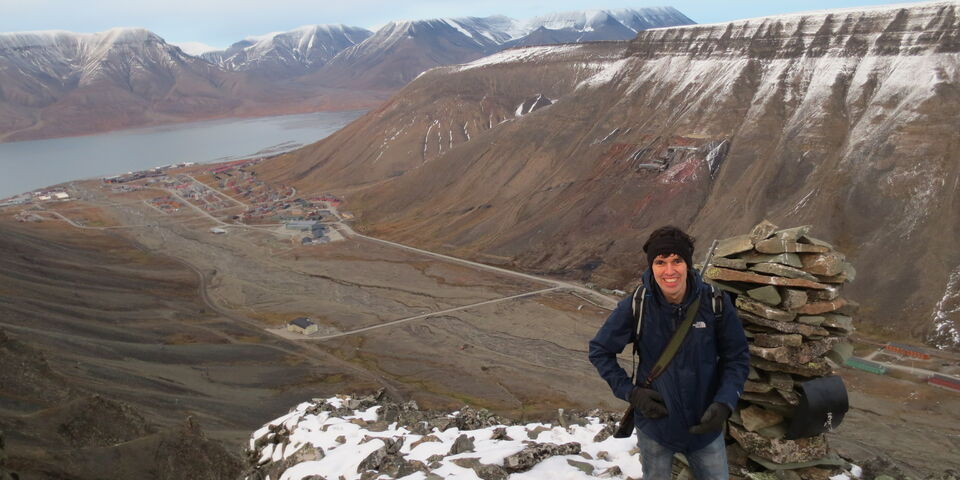Arriving at Svalbard Airport, the first thing you notice is the triangular warning sign: danger - polar bears. Before students start their lectures, they all attend mandatory safety training on how to scare away bears, and shooting lessons. The lectures are an interesting mix of theories and excursions in the Spitsbergen area. Temperatures are close to zero, so waterproof and windproof clothing are no unnecessary luxury.
Longyearbyen is a small village in an arctic desert, and is surrounded by former coalmines. The rugged environment is the perfect location for beautiful walks over mountain tops and glaciers. And because of the midnight sun, you sometimes lose your sense of time completely.
Apart from being a great holiday destination and a gorgeous place to study, Spitsbergen happens to be perfect for research: biologists, physicists, and geologists abound. The climate is changing faster in Spitsbergen than elsewhere and that generates a lot of attention, too. Dutch researchers are important in this field of research, witness recent polar expedition SEES.nl.
UNIS consists of many foreign students of various nationalities. I’m taking a course in arctic infrastructures and climate change, because I’m interested in climate change and public transportation. And because I’ve always wanted to visit Spitsbergen, of course. My classmates are Norwegians, Germans, Russians, and there’s a Canadian. Professors don’t mind flying in from Switzerland to teach at this extraordinary location, either. And with a weekly social where practically all students gather, there’s quite some fun to be had as well!
Visiting Spitsbergen is a unique experience as the focus is not on man, but on nature. It’s a fragile environment that answers to only one: the polar bear!


Discussion